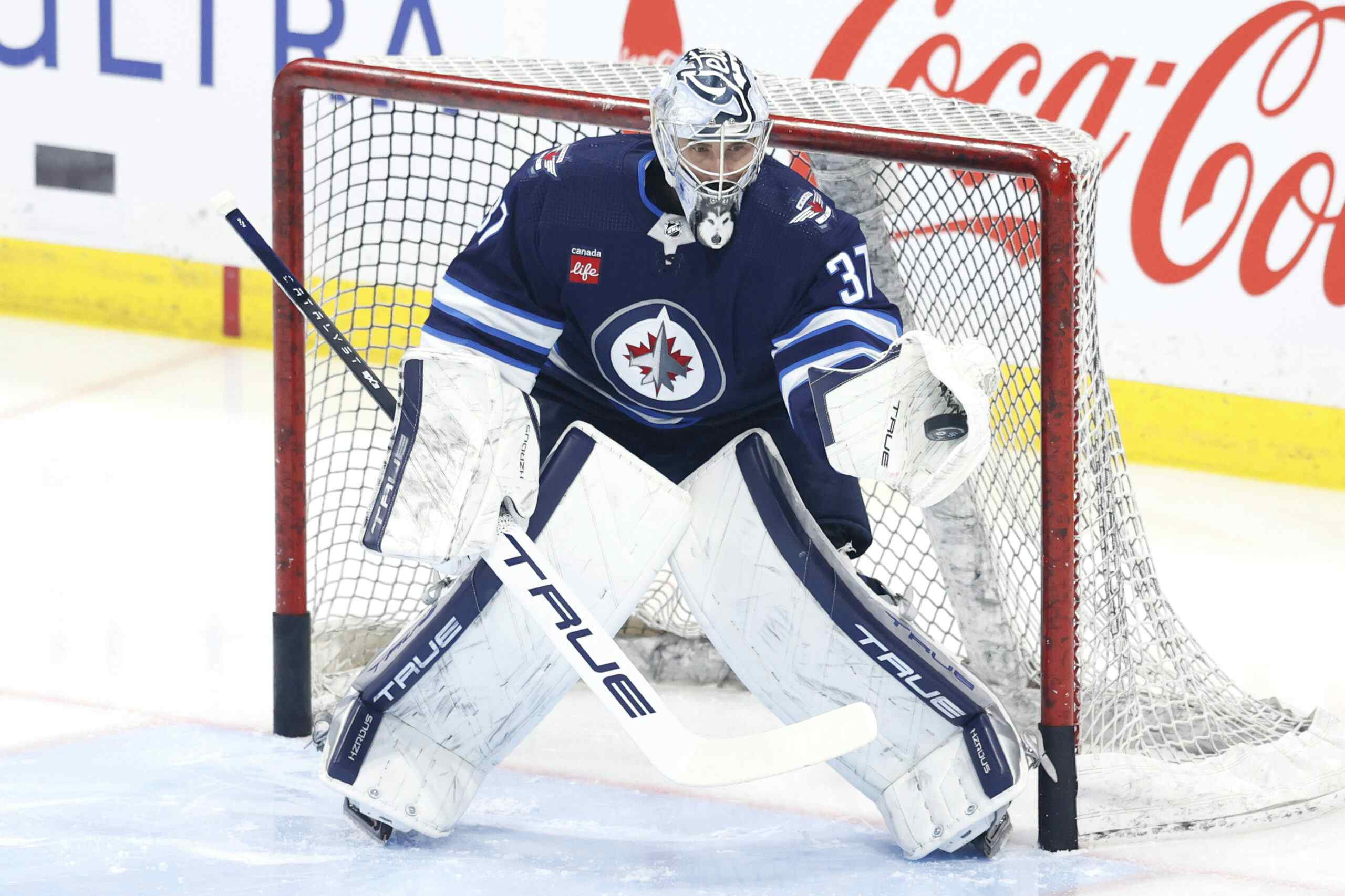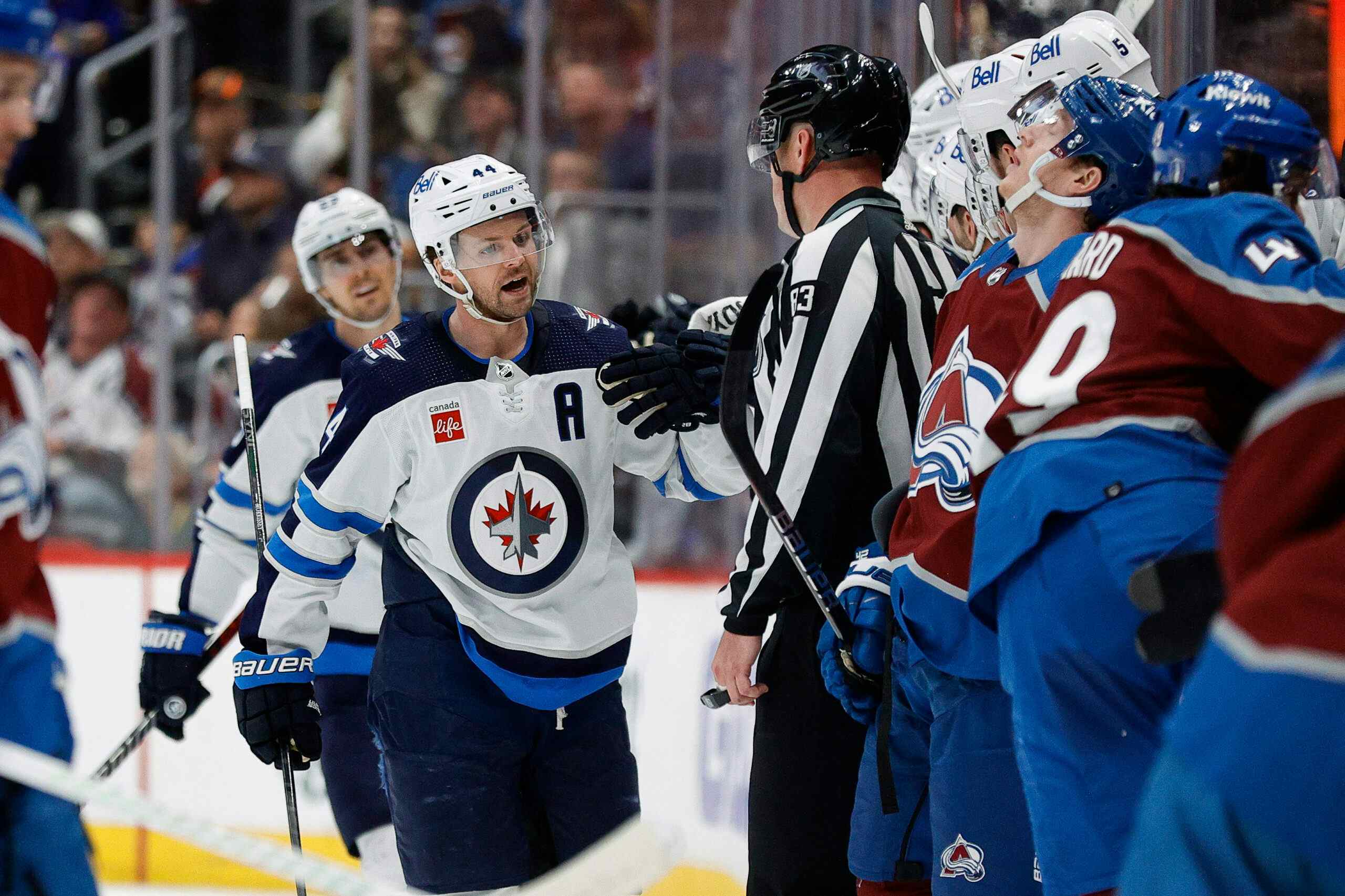Jets Adjusted Corsi by Forward Line: The Role of Coaching Choices

Photo brilliance by thereturn at HF Boards
One of the challenges with measuring process-based metrics like corsi – a measure of possession and territory that correlates well with scoring chances – is that we have stats at the team level and at the individual level. It’s a moving target to try to put these two levels of data into the context of a 5 on 5 game when individuals switch every 40-50 seconds at the desire of a person we don’t measure. We’ve made huge strides – and the WOWY (With or Without You) data over at Hockey Analytics is part of that.
Another part of that was offered by Travis Yost at NHL Numbers the other week – team by team corsi according to forward tiers (Eastern Conf / Western Conf). Grouping forwards into lines by EV time on ice, Travis gives us a sense of how teams are built and shows very strong evidence that to win, teams need depth.
His methodology is sound in general – using even strength time on ice to sort out the ‘tiers’ of forwards – but hides an important reality about how the Jets were coached. Below we’ll look at his chart for the Jets and compare it to a purposeful grouping of the forwards into approximate lines.
Your Winnipeg Jets
 Graph by Travis Yost at NHL Numbers.
Graph by Travis Yost at NHL Numbers.We start by looking at Travis’s chart from his original post at NHL Numbers. This chart tells us a very interesting story about the Jets. For the confused – the red bar is the team’s performance. It’s just a tad over 49%. Put another way, it’s a tad shy of breaking even. But with Travis’s analysis, we see the variability in that by line for the first time. By his graph, the bottom six drags the team down, while the second line pulls the team along.
Of course, as Jets fans, we can all say conclusively without looking at any numbers that the second line did not pull us along. It’s just a reality of the methodology, and interestingly, reveals that Claude Noel is not running his bench based on shot attempt differential.
Travis uses EV TOI to group the forwards, which Evander Kane leads by a quite a bit. Ladd is 4th on the team. You can see where I’m going. Tier one is Kane, Little, and Wheeler. Tier two is Ladd (the corsi monster), Jokinen, and Burmistrov – the leader in zone-start adjusted corsi on the team. Tier 3 is Antropov, Wellwood, and Wright – the team’s worst by this metric. Finally, tier 4 is Tangradi, Thorburn, and Miettinen, owing to Slater’s injury excluding him.
In tier 3, Wellwood’s impressive 51.3% personal number is hidden by Wright’s abysmal 44.3%. Meanwhile, tier 4 is buoyed by Tangradi (50%) against Miettinen’s 2nd worst 46.5%. When organized this way, it looks like a sensible team. The bottom six is the bottom six because they are not as good at hockey. But we know that this isn’t how the players were deployed, and Claude Noel’s chosen lines show that he wasn’t entirely aware of who was pushing results on his own team.
How did Noel use his forwards?
In tinkering with Travis Yost’s work, I decided to do the same analysis but grouping the forwards in purposeful lines – the way they might be written on a depth chart. Of course, things were changed throughout the year, and injuries and additions made their mark. So I’ve put together 5 lines based on Left Wing Lock’s reported most common line combinations and some common sense.

- Line 1: Ladd – Little – Wheeler
- Line 2: Kane – Jokinen – Miettinen
- Line 3: Wright – Antropov – Wellwood
- Line 4: Tangradi – Burmistrov – Santorelli
- Line 5: Wright – Slater – Thorburn
What we see here starts to fit with what we saw on the team. But what doesn’t make sense is Claude Noel, who I think we can say confidently doesn’t monitor shot attempts in building his roster.
Noel’s two best forwards by corsi were given 2nd tier minutes at even strength (we know they also played special teams). We discussed the fact that Burmistrov played 30+ minutes with 12 different forwards this season, and yet maintained a very high individual zone-start adjusted corsi number of 51.5%. We continue to wonder at why he was benched for 4 games and had to play his way off the 4th line.
The Big Picture
Stepping away from just even strength minutes to examine the total ice time given to forwards by Noel, we see that Kane was a workhorse. His shifts were a full 4 seconds longer than any other forward, and 9 seconds longer than Wright – the bottom end of the left wingers by shift length. Kane creates quite a bit at a young age, but had an assortment of linemates in part because his shift lengths were out of rhythm with the rest of the team. Olli Jokinen’s season is not news, and we can see that Noel was aware enough to move Kane up and down to alter his matchups and give him some different looks.
The case of James Wright

Photo by Dinur.
The most curious case is that of James Wright. His shift length averaged just 42 seconds, but Noel gave him the same even strength minutes and 2.5 more total shifts per game than Tangradi, despite considerably worse results at puck possession and territorial advantage. In fact, he was given as many shifts as Kyle Wellwood – the playmaker just one season removed from his 47 point season who got 36 minutes of powerplay time in 48 games on the league’s worst powerplay, a discipline where the team was desperate for goals and lacked a clear second unit. Of course, Wright’s PK time affects this, but as he was the team’s worst PK forward by 4 on 5 corsi%, he can hardly be called a specialist.
Moreover, a full season of data can hide bigger differences. We can watch Wright become a coach favourite, and then lose his minutes to Line 4 above once Santorelli is added. Let’s have a look.

As all these players missed games, the above chart is just their personal game number, not the official game number.
In his 13th game, Wright is given 23 shifts and takes Tangradi’s minutes until his 29th game, after which they roughly break even. We can see their shifts vary in proportion as they were battling for the same ice time. Wellwood was battling for different minutes, but I put him on to prove a point. That point being that the coach gave his worst possession player more minutes than his better possession players.
The line of Tangradi – Burmistrov – Santorelli (Line 4 above) really took off together at the end of the year and we see Tangradi’s minutes grow in chart 3. We don’t have 3-person WOWY data currently, but we know that if we were able to isolate their ice time together, that 51% would be higher. Yet, still Wright earned minutes on a team trying to fight for a playoff spot. Santorelli earned just one more shift per game than Wright on average, who by this point had shown his basement dwelling quality.
Maybe the most damning statement about Wright’s season can be seen in the fact that he doubles on Line 3 and Line 5 in chart 2. The team’s preferred 4th line (Line 5 above) was a bit of a drag on the numbers, but we can still put most of the blame on James Wright, who drags the otherwise 50% duo of Antropov and Wellwood down on Line 3, and, shockingly, even drags down Slater and Thorburn, who are a combined 47.25% as a pair. Wright’s personal zone-start adjusted corsi rate of 44.3% is last among forwards with 50 minutes played, and well behind Miettinen’s second worst personal number of 46.5%, and even further behind the surprising 48% posted by the much-maligned Chris Thorburn (though he played very few minutes). Thorburn (and others) can still be improved upon on this roster, but James Wright sticks out as so poor as to be a barrier to team success. And yet, he was a coach favourite who earned over 14 minutes a game through the entire middle third of the season.
What did we learn?
The fact is, no matter who Cheveldayoff gives to Noel, it’s up to the coach to play them. Wright was bad. Wright was so bad as to cost the team, and yet he was rewarded with minutes. I think it’s safe to say that Noel felt Wright’s obviously effortful play was worthy of adulation even while watching Wright’s inability to possess the puck or move the play into the opponent’s end cost his team goals against.
When we look at corsi by line, we see very clearly that Claude Noel did a poor job of understanding who was effective at generating chances, and put together lines that don’t match with a more rational approach to the game. It’s a concern.
Recent articles from Kevin McCartney





